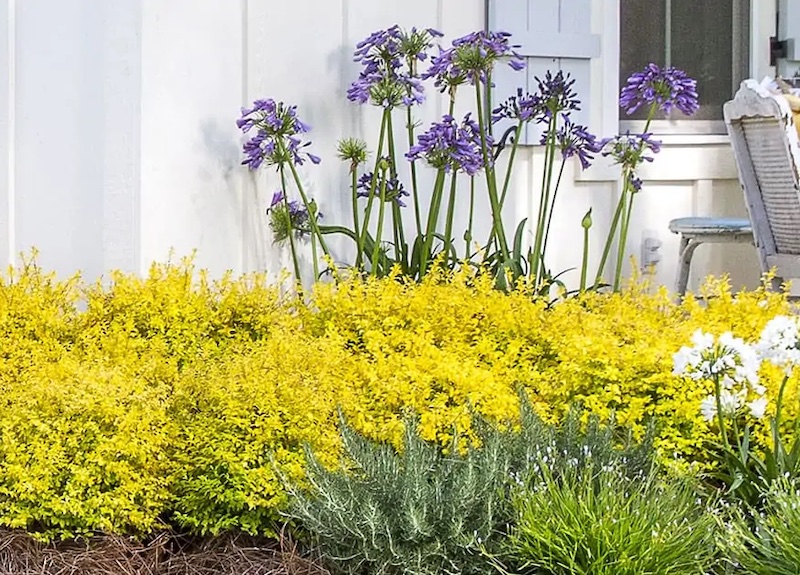Exactly how to Plant and Maintain Agapanthus in Your Yard
Exactly how to Plant and Maintain Agapanthus in Your Yard
Blog Article
Understanding the Art of Agapanthus Treatment: Crucial Steps for Healthy Development and Vivid Blossoms
In the realm of gardening, the farming of agapanthus stands as a fulfilling undertaking for those who look for to support these sophisticated blooming plants. From choosing the ideal selection to grasping trimming techniques, the journey in the direction of growing prospering agapanthus plants is multifaceted and holds the key to opening the complete potential of these organic gems.

Picking the Right Agapanthus Variety

When picking the appropriate Agapanthus range for your yard, take into consideration aspects such as climate suitability, bloom color, and growth routine. Agapanthus, commonly recognized as Lily of the Nile or African lily, comes in a variety of shades varying from tones of blue and purple to white. Select a flower color that matches your existing garden combination to produce an unified landscape. In addition, think about the environment in your region to guarantee the Agapanthus variety you select can thrive in your certain problems. Some ranges are a lot more forgiving of cold temperatures, while others like warmer environments. Recognizing the development practice of different Agapanthus ranges is crucial for proper placement within your garden. Some ranges have a clumping growth behavior, suitable for borders or containers, while others have a more dispersing nature, appropriate for ground cover or mass plantings. By carefully assessing these variables, you can pick the excellent Agapanthus range to improve the beauty of your yard.
Ideal Growing Problems
Thinking about the optimum environmental needs is crucial for effective Agapanthus farming. Agapanthus prospers in well-draining dirt with a somewhat acidic to neutral pH level. When growing, pick a location that obtains full sunlight to partial shade. In hotter climates, giving some mid-day shade can protect against scorching of the leaves. Agapanthus plants are sensitive to chilly temperatures and ought to be secured from frost throughout winter season.
To make sure healthy and balanced development and lively blossoms, plant Agapanthus bulbs at a depth of about 2-4 inches and area them 8-12 inches apart. Including raw material, such as garden compost, to the soil can improve drain and fertility, promoting robust root development. Mulching around the base of the plants helps preserve dampness and suppresses weed development. Normal watering is critical, specifically during the expanding season, to maintain the soil regularly moist but not waterlogged.
Watering and Feeding Tips
Maintaining appropriate dampness degrees and providing crucial nutrients are key components in the care regimen for Agapanthus plants. When it comes to watering Agapanthus, it is crucial to strike a balance. These plants favor continually damp dirt but are vulnerable to root rot if overwatered.
Fertilizing Agapanthus is important for advertising healthy development and prolific blossoms. Apply a balanced plant food, such as a 10-10-10 formula, in the very early spring as new development emerges. Repeat this application every 6-8 weeks throughout the expanding season. Avoid too much fertilizing, as it can result in lush foliage at the expenditure of blooms. Always adhere to the maker's instructions for correct dilution and application techniques. By adhering to these watering and fertilizing pointers, you can guarantee your Agapanthus plants grow and view website generate dynamic, resilient blooms.
Trimming Techniques for Agapanthus
Trimming Agapanthus plants at the ideal times and with correct methods is vital for keeping their health and advertising ideal development and blooming. The excellent time to prune Agapanthus is in late winter or very early springtime prior to brand-new growth arises.
Deadheading invested flowers can additionally reroute the plant's energy right into generating more blooms instead than setting seeds. If you desire to accumulate seeds for proliferation, leave some flowers to mature and completely dry on the plant.
Bear in mind to make use of tidy, sharp tools to make exact cuts and decrease the risk of presenting illness. Agapanthus. Normal trimming will help keep your Agapanthus looking cool and healthy and balanced while making certain a plentiful display screen of beautiful flowers
Handling Common Insects and Diseases
After ensuring proper trimming techniques for Agapanthus, it is essential to deal with typical bugs and conditions that can influence the wellness and vitality of these plants. Agapanthus plants are normally hardy yet can still come down with particular problems. One typical pest that impacts Agapanthus is the Agapanthus gall midge. This small, orange fly lays its eggs in the foliage, resulting in altered development and blossom buds that fail to open up. To fight this pest, trim and damage any kind of afflicted plant parts and consider using insecticidal soap.
In addition, Agapanthus plants can experience from root rot if they are grown in improperly draining pipes dirt. By being attentive and taking timely action against conditions and insects, you can aid your Agapanthus plants grow and produce vibrant blooms. Agapanthus.
:max_bytes(150000):strip_icc()/agapanthus-growing-guide-7368912_04-66a3f4cf245b4332b28954dd37c784f5.jpg)
Conclusion
In verdict, mastering the art of agapanthus care entails picking the right selection, giving excellent growing conditions, appropriate watering and fertilizing, suitable trimming techniques, and attending to typical pests and conditions. By complying with these necessary actions, you can ensure healthy development and dynamic flowers for your agapanthus plants. Keep in mind to regularly keep an eye on and maintain your plants to advertise their general health and basics long life.
To ensure healthy growth and dynamic blossoms, plant Agapanthus light bulbs at a deepness of about 2-4 inches and room them 8-12 inches apart. By following these watering and fertilizing suggestions, you can guarantee your Agapanthus plants thrive and produce vivid, durable flowers.
One typical bug that impacts Agapanthus is the Agapanthus gall midget. In addition, Agapanthus plants can experience from origin rot if they are grown in poorly draining pipes soil. By following these necessary actions, you can make sure healthy growth and vibrant blog here blossoms for your agapanthus plants.
Report this page